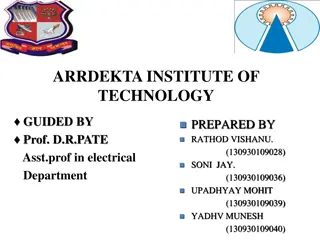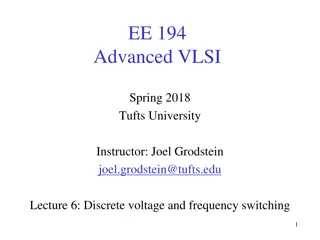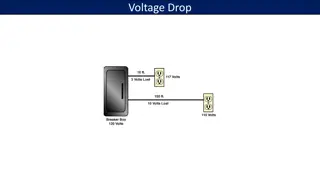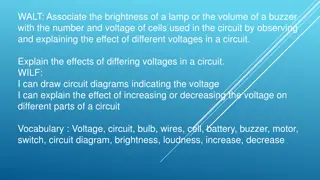Understanding High Voltage Testing of Transformers
This detailed presentation covers the importance and procedures of high voltage testing for transformers. It highlights the purpose, objectives, tests involved, equipment used, and safety measures to ensure the reliability and longevity of transformers. Various tests like AC Withstand Voltage Test, Partial Discharge Test, Lightning Impulse Test are explained, emphasizing the critical role of high voltage testing in maintaining transformer performance and safety.
Download Presentation

Please find below an Image/Link to download the presentation.
The content on the website is provided AS IS for your information and personal use only. It may not be sold, licensed, or shared on other websites without obtaining consent from the author. Download presentation by click this link. If you encounter any issues during the download, it is possible that the publisher has removed the file from their server.
E N D
Presentation Transcript
High Voltage Test of Transformer
Purpose: To provide a detailed description of the high voltage test of transformers Transformers are critical components in power systems, responsible for voltage transformation and distribution High voltage tests ensure the reliability, safety, and performance of transformers This presentation will cover the testing methods, equipment, procedures, and standards associated with high voltage testing of transformers The high voltage test is performed to verify the insulation strength and reliability of transformers Identifies any insulation weaknesses, partial discharges, or other faults that might affect the transformer's operation
Objective Ensures that the transformer can withstand the operating voltages and environmental conditions it will encounter in service Helps prevent unexpected failures, reduce downtime, and ensure the longevity of the transformer AC Withstand Voltage Test Applies a high AC voltage to the transformer to test its insulation strength The test voltage is gradually increased to a specified level and held for a specified duration Determines whether the insulation can withstand the rated voltage without breakdown or damage Partial Discharge Test Detects partial discharges within the transformer's insulation system Partial discharges can indicate insulation defects that may lead to failure in the future
List of Tests Performed at high voltage levels and can be conducted during the AC withstand voltage test Lightning Impulse Test Simulates the effects of lightning strikes on the transformer Applies a high-voltage impulse waveform to the transformer winding Tests the ability of the insulation to withstand the sudden voltage rise caused by lightning High Voltage Test Set: Generates high AC voltages or impulse waveforms for testing Measurement Instruments: Voltage dividers, oscilloscopes, partial discharge detectors, and other devices to monitor and record test parameters Safety Equipment: Personal protective equipment , grounding devices, and safety interlocks to ensure the safety of personnel and equipment
Pre-Test Preparations Ensure proper grounding and safety measures are in place Verify the test equipment calibration and functionality Review the test specifications, standards, and safety guidelines AC Withstand Voltage Test Procedure Apply the specified AC voltage gradually, following the prescribed ramping rate Monitor the insulation parameters and partial discharge activity Hold the test voltage for the specified duration Gradually reduce the voltage to zero and verify no damage or breakdown occurred
Partial Discharge Test Procedure Apply the designated test voltage Monitor and record any partial discharges Analyze the partial discharge patterns to identify potential insulation defects Lightning Impulse Test Procedure Apply the high-voltage impulse waveform to the transformer winding Monitor the response waveform and evaluate the insulation performance Ensure the insulation withstands the voltage surge without failure High voltage tests of transformers adhere to international standards and regulations Common standards include IEC 60076, IEEE C57, and ANSI/IEEE C37.20 These standards define the test voltage levels, procedures, safety precautions, and acceptance criteria
Conclusions High voltage tests are essential to ensure the reliability and safety of transformers Various testing methods, equipment, and procedures are employed Compliance with international standards and regulations is crucial Regular high voltage testing helps identify potential issues and ensures transformers perform optimally

























